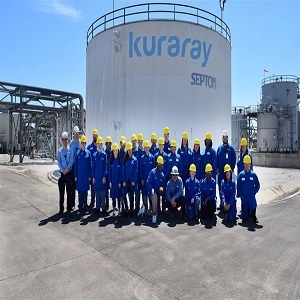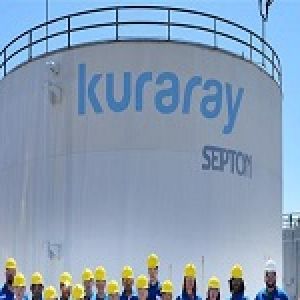Revolutionizing Ceramic Production: The Role of Polyvinyl Alcohol as a Water-Soluble Binder
Posted by kuraraypovaluk on April 27th, 2024
In the realm of ceramics manufacturing, the quest for innovation and sustainability has been a driving force for the adoption of new materials and techniques. Traditional binders often pose challenges in terms of environmental impact and production efficiency. However, the emergence of water-soluble binders, particularly Polyvinyl Alcohol (PVA), has revolutionized the ceramics industry, offering a compelling solution to these longstanding issues. This article explores the properties, benefits, and applications of PVA as a water-soluble binder in ceramics production.
Understanding Polyvinyl Alcohol:
Polyvinyl Alcohol, commonly abbreviated as PVA, is a synthetic polymer derived from the polymerization of vinyl acetate followed by hydrolysis. It is characterized by its water-solubility, biodegradability, and film-forming properties, making it an ideal candidate for various industrial applications, including ceramics production.
Properties of PVA in Ceramics:
- Water Solubility: One of the most significant advantages of PVA as a binder in ceramics is its water solubility. Unlike traditional organic binders, PVA dissolves completely in water, leaving no residue behind. This property simplifies the manufacturing process, as it eliminates the need for organic solvents and facilitates easy removal of the binder from the ceramic green body.
- Adhesion and Cohesion: PVA exhibits excellent adhesion to ceramic particles, promoting uniform distribution within the ceramic matrix. Its cohesive nature ensures strong bonding between particles, resulting in improved green strength and handling properties during shaping and forming processes.
- Thermal Stability: PVA offers exceptional thermal stability, making it suitable for high-temperature firing processes commonly employed in ceramics production. It decomposes cleanly without leaving any carbonaceous residues, thereby minimizing defects and ensuring the integrity of the final ceramic product.
- Compatibility with Additives: PVA can be easily modified to accommodate various additives such as plasticizers, defoamers, and dispersants, allowing for tailored formulations to meet specific performance requirements. This versatility enhances the flexibility and applicability of PVA-based binder systems in ceramics manufacturing.
Benefits of Using PVA in Ceramics Production:
- Environmental Sustainability: As a water soluble binder for ceramics, PVA offers a more environmentally friendly alternative to conventional organic binders, which often contain volatile organic compounds (VOCs) and hazardous chemicals. Its biocompatibility ensures minimal ecological impact and reduces the carbon footprint of ceramics production processes.
- Process Efficiency: The water solubility of PVA simplifies the binder removal step in ceramic processing, leading to shorter cycle times and increased production efficiency. Moreover, PVA's compatibility with aqueous systems eliminates the need for solvent-based cleaning methods, streamlining equipment maintenance and reducing operational costs.
- Enhanced Product Quality: By facilitating uniform dispersion of ceramic particles and promoting strong interparticle bonding, PVA contributes to the improved mechanical properties and dimensional stability of ceramic components. This results in higher quality finished products with superior performance characteristics and reduced likelihood of defects.
Applications of PVA in Ceramics:
The versatility of PVA-based binder systems has enabled their widespread adoption across various segments of the ceramics industry, including:
- Traditional Ceramics: PVA finds applications in the production of traditional ceramics such as pottery, tableware, and sanitaryware, where its compatibility with different ceramic formulations and forming techniques enhances manufacturing efficiency and product quality.
- Advanced Ceramics: In the realm of advanced ceramics, including structural ceramics, electronic ceramics, and biomedical ceramics, PVA serves as a versatile binder for shaping complex geometries and achieving precise dimensional control, thereby enabling the fabrication of high-performance ceramic components for diverse applications.
- Additive Manufacturing (3D Printing): The emergence of additive manufacturing technologies, particularly ceramic 3D printing, has created new opportunities for PVA-based binders. PVA formulations optimized for extrusion-based 3D printing processes enable the fabrication of intricate ceramic structures with customizable properties and geometries.
Conclusion:
Polyvinyl Alcohol (PVA) has emerged as a game-changing material in the ceramics industry, offering a host of advantages as a water-soluble binder. Its unique combination of properties, including water solubility, adhesion, thermal stability, and compatibility with additives, makes it an attractive choice for ceramics manufacturers seeking sustainable, efficient, and high-quality production solutions. As the demand for eco-friendly and innovative materials continues to grow, PVA is poised to play a pivotal role in shaping the future of ceramics manufacturing worldwide.



